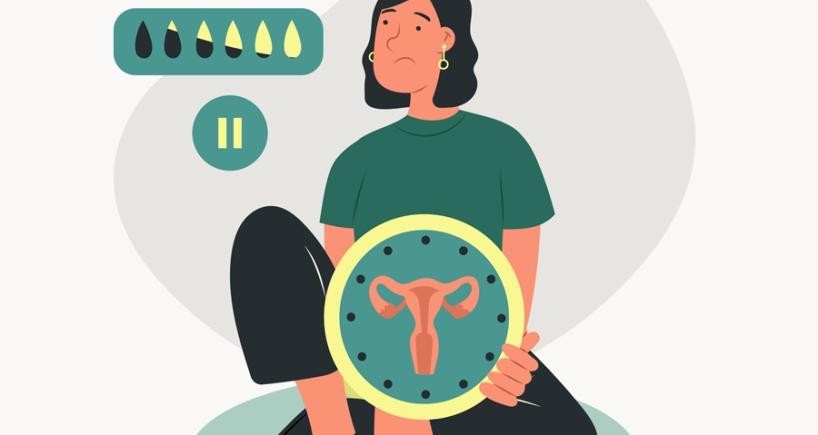
Measuring Endometrial Thickness: Norms and Techniques
Introduction
The endometrium, the inner lining of the uterus, plays a crucial role in the reproductive health of individuals with female anatomy. Endometrium thickness is a vital indicator of reproductive health and reflects potential underlying conditions. Understanding the normal range of endometrium thickness at various stages, along with the measurement methods and thickness-influencing factors, is essential for healthcare providers in providing optimal patient care.
Average Endometrial Thickness at Various Stages
The standard endometrium thickness can vary depending on various factors, such as age, menstrual cycle phase, and reproductive status. Here’s a general guideline at different stages:
- Menstrual Cycle:
- Early Proliferative Phase (Days 5–9): 2–4 millimeters
- Late Proliferative Phase (Days 10–14): 5–7 millimeters
- Secretory Phase (Days 15–28): 7–14 millimeters
- Postmenopausal Women: Less than 5 millimeters, but can vary
- Pregnancy: The thickness increases significantly during pregnancy, reaching up to 15–20 millimeters
Causes of Endometrial Thickness and Thinning
A-Factors Causing Thick Endometrial Lining:
- Hormonal Imbalance: Estrogen and progesterone fluctuations stimulate endometrial growth, leading to its thickening.
- Menstrual Disorders: Conditions like PCOS or anovulation cause irregular cycles and abnormal endometrial thickness.
- Endometrial Hyperplasia: Excessive cell proliferation due to unopposed estrogen stimulation thickens the endometrium.
- Endometrial Polyps: Benign growths within the lining cause focal thickening.
- Endometrial Cancer: Abnormal thickening might indicate endometrial cancer, especially in postmenopausal women.
- Hormone Replacement Therapy (HRT): Estrogen replacement without progesterone can cause hyperplasia and thickening.
B-Factors Causing Thinning of the Uterine Lining:
- Hormonal Imbalance: Reduced estrogen or inadequate progesterone support leads to endometrial thinning.
- Menopause: Natural estrogen decline during menopause causes endometrial thinning.
- Chronic Endometritis: Endometrial inflammation leads to gradual thinning.
- Malnutrition or Eating Disorders: Severe cases disrupt hormonal balance, affecting endometrial thickness.
- Medications or Treatments: Chemotherapy or radiation therapy can lead to endometrial thinning or atrophy.
- Underlying Medical Conditions: Autoimmune or thyroid disorders can affect hormonal balance, contributing to endometrial thinning.
- Asherman’s Syndrome: Prior uterine surgery or infection scarring results in endometrial thinning.
How Does the Thickening and Thinning of the Uterine Lining Manifest?
Symptoms of Thick Endometrial Lining:
- Abnormal bleeding
- Pelvic pain during menstruation or intercourse
- Menstrual irregularities
- Infertility
Symptoms of Endometrial Thinning:
- Irregular or no periods
- Difficulty conceiving
- Hot flashes, night sweats, or vaginal dryness, especially in menopausal or hormonally imbalanced individuals
Measuring Endometrial Thickness
- Preparation: The procedure is usually done in a doctor’s office or a medical imaging center. Patients are advised to drink water beforehand to ensure a full bladder, which can help provide a better ultrasound image.
- Positioning: The patient will be asked to lie on an examination table, usually in the lithotomy position (lying on the back with legs elevated, knees bent, and thighs apart) for optimal access.
- Ultrasound Probe Insertion: A specialized device (transducer) covered with a protective sheath and lubricant is gently inserted into the vagina. The transducer emits high-frequency sound waves, which bounce off internal structures and create images on a monitor.
- Image Acquisition: The transducer is maneuvered to obtain clear images of the uterus and endometrium.
- Recording Measurements: The ultrasound machine typically has built-in tools for measuring distances on the screen. The thickness of the endometrium is recorded in millimeters. Measurements may be taken at multiple points along the endometrium to ensure accuracy.
- Interpretation: Normal endometrial thickness varies depending on age, menstrual cycle phase, and reproductive status.
- Follow-Up: Further testing or follow-up appointments may be recommended depending on the symptoms.
Changes in endometrial thickness over time may warrant additional evaluation or monitoring.
Why Measuring Endometrial Thickness is Important?
Accurate measurement of endometrial thickness is crucial for various reasons:
- Reproductive Health Assessment: Endometrial thickness provides valuable information about the health of the uterus and its ability to support pregnancy.
- Diagnosis of Conditions: Abnormal endometrial thickness can indicate endometrial hyperplasia, polyps, or cancer.
- Fertility Treatment: Monitoring endometrial thickness is essential in assisted reproductive techniques, such as in vitro fertilization (IVF), where an optimal endometrial lining is necessary for successful embryo implantation.
Treatment
The treatment for a thickened endometrium involves hormone therapy and surgical intervention. On the other hand, endometrial thinning is treated with Hormone Replacement Therapy (HRT). Medical evaluation is essential for proper diagnosis and treatment.
In conclusion, while measuring endometrial thickness may seem complex, it is a routine and essential aspect of reproductive healthcare. Through transvaginal ultrasound, healthcare providers can accurately assess endometrial health, diagnose underlying conditions, and guide treatment decisions, ultimately contributing to better patient reproductive outcomes.
Popular Searches :
Hospitals: Cancer Hospital in Delhi | Best Heart Hospital in Delhi | Hospital in Amritsar | Hospital in Ludhiana | Hospitals in Mohali | Hospital in Faridabad | Hospitals in Gurgaon | Best Hospital in Jaipur | Hospitals in Greater Noida | Hospitals in Noida | Best Kidney Hospital in Kolkata | Best Hospital in Kolkata | Hospitals in Rajajinagar Bangalore | Hospitals in Richmond Road Bangalore | Hospitals in Nagarbhavi Bangalore | Hospital in Kalyan West | Hospitals in Mulund | Best Hospital in India | | Cardiology Hospital in India | Best Cancer Hospital in India | Best Cardiology Hospital in India | Best Oncology Hospital In India | Best Cancer Hospital in Delhi | Best Liver Transplant Hospital in India
Doctors: Dr. Rana Patir | Dr. Rajesh Benny | Dr. Rahul Bhargava | Dr. Jayant Arora | Dr. Anoop Misra | Dr. Manu Tiwari | Dr. Praveer Agarwal | Dr. Arup Ratan Dutta | Dr. Meenakshi Ahuja | Dr. Anoop Jhurani | Dr. Shivaji Basu | Dr. Subhash Jangid | Dr. Atul Mathur | Dr. Gurinder Bedi | Dr. Monika Wadhawan | Dr. Debasis Datta | Dr. Shrinivas Narayan | Dr. Praveen Gupta | Dr. Nitin Jha | Dr. Raghu Nagaraj | Dr. Ashok Seth | Dr. Sandeep Vaishya | Dr. Atul Mishra | Dr. Z S Meharwal | Dr. Ajay Bhalla | Dr. Atul Kumar Mittal | Dr. Arvind Kumar Khurana | Dr. Narayan Hulse | Dr. Samir Parikh | Dr. Amit Javed | Dr. Narayan Banerjee | Dr. Bimlesh Dhar Pandey | Dr. Arghya Chattopadhyay | Dr. G.R. Vijay Kumar | Dr Ashok Gupta | Dr. Gourdas Choudhuri | Dr. Sushrut Singh | Dr. N.C. Krishnamani | Dr. Atampreet Singh | Dr. Vivek Jawali | Dr. Sanjeev Gulati | Dr. Amite Pankaj Aggarwal | Dr. Ajay Kaul | Dr. Sunita Varma | Dr. Manoj Kumar Goel | Dr. R Muralidharan | Dr. Sushmita Roychowdhury | Dr. T.S. MAHANT | Dr. UDIPTA RAY | Dr. Aparna Jaswal | Dr. Ravul Jindal | Dr. Savyasachi Saxena | Dr. Ajay Kumar Kriplani | Dr. Nitesh Rohatgi | Dr. Anupam Jindal |
Specialities: Heart Lung Transplant | Orthopedic | Cardiology Interventional | Obstetrics & Gynaecology | Onco Radiation | Neurosurgery | Interventional Cardiology | Gastroenterologist in Jaipur | Neuro Physician | Gynecologist in Kolkata | Best Neurologist in India | Liver Transfer |



















